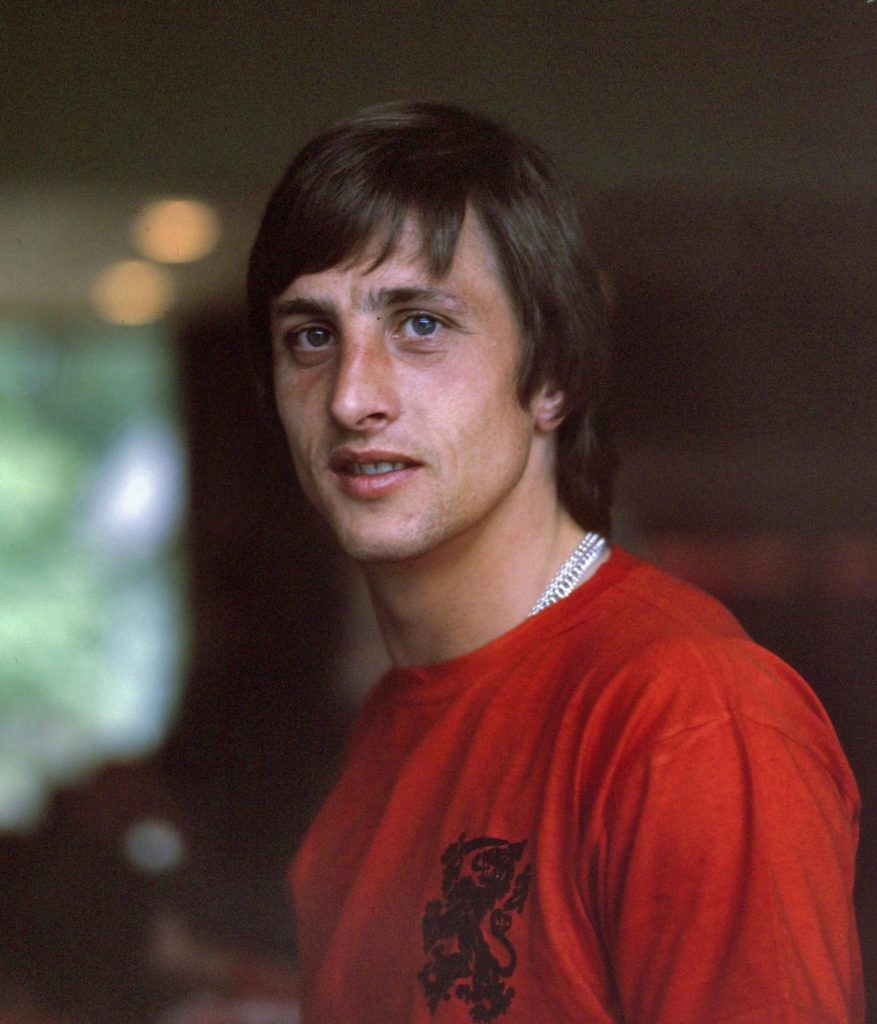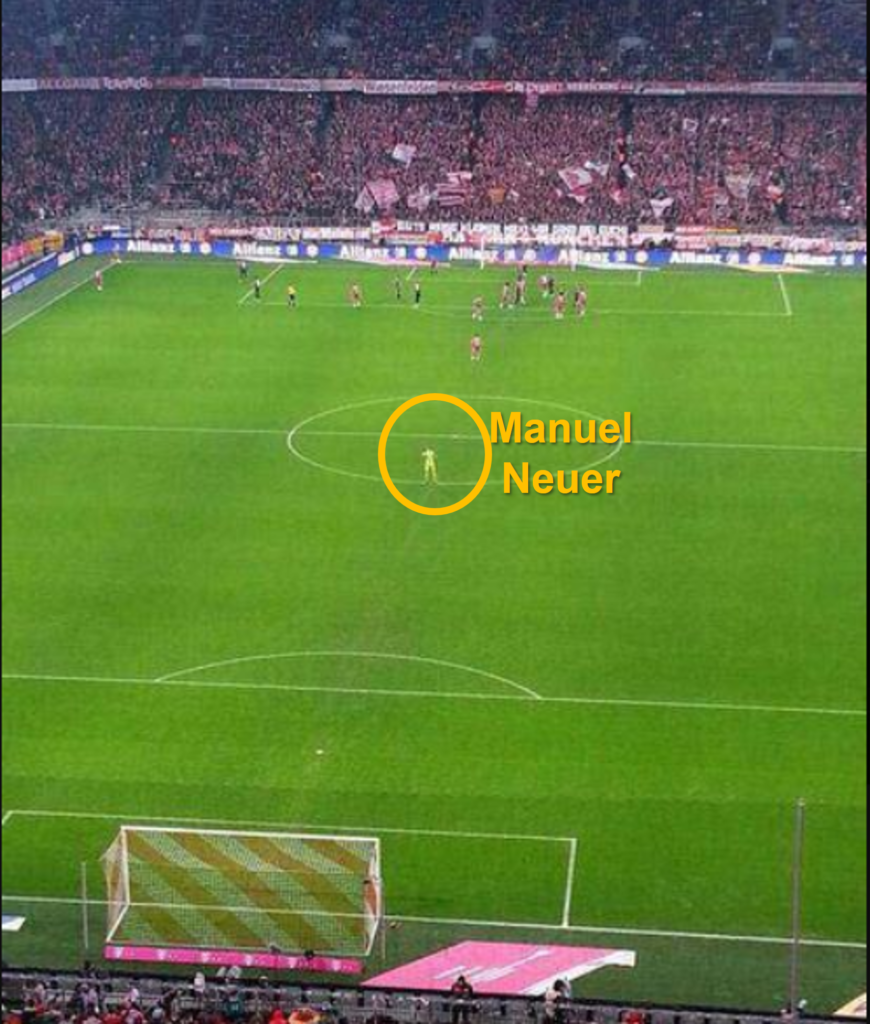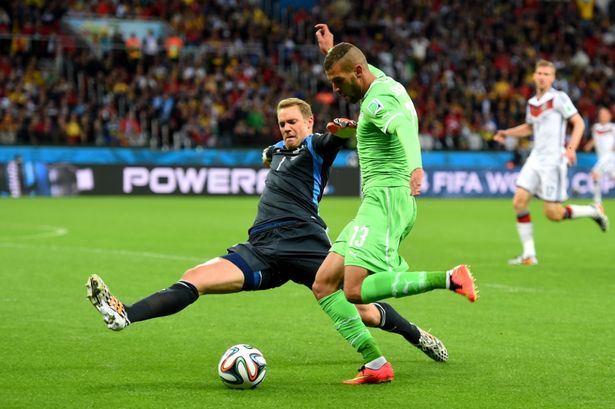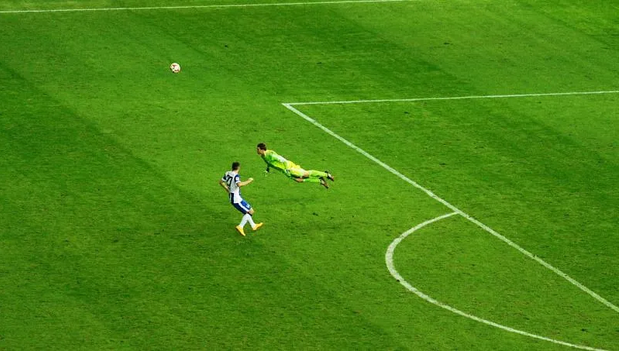
“You can never take away a person’s vision, and goalkeeping at a high level is largely a question of vision. If everybody moves forward, you need an extra defender, so the goalkeeper has to be able to play as well.”
— Johan Cruyff1
The sweeper keeper is, as Cruyff’s comment adeptly describes it in Jonathan Wilson’s book The Outsider, a goalkeeper that has the necessary skills to play as an outfield player, controlling the area in behind the defense. In fact, after the abolition of the back pass in 1992, it was Cruyff’s Barcelona that changed to a system where the sweeper-keeper played an essential role. Cruyff notoriously sold Andoni Zubizaretta, who was a traditional shot-stopping goalkeeper, opting instead for Carles Busquets (Sergio Busquets’ father), whose shot-stopping ability was questionable but he was arguable better with his feet than Zubizaretta. Cruyff had witnessed this system first-hand in 1974, when the father of “Total Football” Rinus Michels played Jans Jongbloed as a sweeper-keeper instead of a more traditional line goalkeeper like Jan van Beveren.2
While the term has been popularized and brought into the mainstream football talk in the past decade due to Manuel Neuer, the Bayern Munich and Germany national team goalkeeper, the history of the sweeper keeper is much older, and involves a variety of goalkeepers such as the great Lev Yashin, Rene Higuita, or Edwin van der Sar. An article by the Bleacher Report about the 50 greatest goalkeepers in history attributes the first sweeper-keeper role to Gyula Grosics, the Hungarian Golden Team goalkeeper.3
Grosics, nicknamed the “Black Panther”, was the starting goalkeeper for Hungary at three different World Cups (1954, 1958, 1962). Part of the Hungarian Golden Team that included Ferencz Puskas, Grosics was the starting goalkeeper in what was dubbed the “Match of the Century” against England at Wembley, when Hungary thrashed the home team 6-3. This thrashing came also as a result of the unique formation employed by the Hungarians, a 3-2-1-4 (compared to the English who were still using the outdated W-M formation), with three wide centre-backs, which required Grosics to act as an extra defender. He seemed to relish in his role, and explained that timing and communication with his defense were essential to him fulfilling the role adequately.4 This of course complemented his innate ability to read the game and read the opposition’s passes.
Key Qualities
– excellent decision-making
– explosiveness and agility
– ability to communicate effectively with teammates
– excellent reading of the game
– confident with the ball at his feet
– composure and a tinge of insanity
What Grosics explained in terms of his role can be easily seen in modern football today. As mentioned above, Manuel Neuer has become the poster boy for modern sweeper keepers. A tall, physically-imposing goalkeeper, Neuer is a fantastic shot-stopper and ball distributor (with both his arms and his feet). However, he is best known for his sweeper-keeper prowess. Michael Cox explains in his book Zonal Marking how Guardiola’s arrival at Bayern Munich in 2013 made Neuer even more aggressive in his sweeper-keeper duties, by moving the defensive line from an average of 36m to 43.5m away from their own goal.5
This incredibly high defensive line meant Neuer’s starting position was very often at around the edge of the box, sometimes even closer to midfield (see Figure 1 for an example). Always on his toes and ready to launch himself in a full cross-pitch sprint, Neuer’s enhanced sweeping abilities helped the German national team immensely, as they saved Germany from embarrassment at the 2014 World Cup against Algeria in the first knockout round (Figure 2), and eventually helped them win the title (although his collision with Gonzalo Higuain following a trademark sweeping run in the World Cup final is still debated to this day).
However, not everything is rosy when it comes to Neuer’s (or as an extension, to any sweeper-keeper) playstyle. Sometimes, miscommunication with teammates or misreading of the situations leads these keepers to get stranded in no-man’s-land, with an empty goal for the opposition to try to score in. For example, Neuer was caught outside his goal twice when sweeping in the 2014 Champions League defeat against Real Madrid, but neither Bale nor Ronaldo managed to put the ball into the net.5
While Neuer gave new meaning to the term and has continuously improved on his sweeper-keeper role throughout the decade, it was players like Ederson who took it to new levels. The Manchester City goalkeeper is notorious for his sweeping abilities (95 sweeping clearances in 151 league appearances for Manchester City), as well as his incredible passing accuracy – he has amassed a total of 3844 passes over 151 appearances (25.46 passes/game, 83.25% average accuracy over the seasons6), and an astounding 568 accurate long balls.7 Ederson often launches counter-attacks after sweeping the ball, with long accurate passes in behind the opposition. This tactic has afforded him a fantastic tally of 2 assists (so far) during his Manchester City league career.
To conclude, the sweeper-keeper role is definitely fun to watch, but also incredibly hard to execute correctly, and sometimes outright dangerous (recall Ederson’s injury in the derby vs Liverpool in September 2017, when he collided with Sadio Mané about 25 yards from his goal). It is a role that is continuously defined by emerging goalkeepers who implement their own ideas about how the role should be played (like Ederson, who effectively becomes a deep-lying playmaker after sweeping the ball). A goalkeeper has to have specific qualities for it to work, and a single misjudged situation can result in conceding a howler. However, a good sweeper-keeper can change the tactics of the team completely, as exemplified by Guardiola, who often played with three defenders instead of four due to Neuer’s sweeping abilities, which in turn allowed him to fit in an extra midfielder or striker in the team.5
Other Notable Sweeper-Keepers
Ederson – Manchester City
Edwin van der Sar – former Ajax and Man. Utd GK
Marc-André Ter Stegen – Barcelona
Alisson Becker – Liverpool
References
- Jonathan Wilson, The Outsider: A History of the Goalkeeper, ISBN-10:1409123197, Orion; UK ed. edition (Feb. 5 2013)
- https://firsttimefinish.co.uk/2020/11/05/the-modern-sweeper-keeper/
- https://bleacherreport.com/articles/1781995-the-50-greatest-goalkeepers-in-history#slide24
- https://thesefootballtimes.co/2015/09/21/gyula-grosics-hungary-magyars/
- Michael Cox, Zonal Marking: From Ajax to Zidane, the Making of Modern Soccer, ISBN-10:1568589336, Bold Type Books (August 13, 2019)
- https://www.infogol.net/en/player/ederson/3287
- https://www.premierleague.com/players/12707/Ederson/stats
Last Updated
[ratemypost]
[ratemypost-result]



